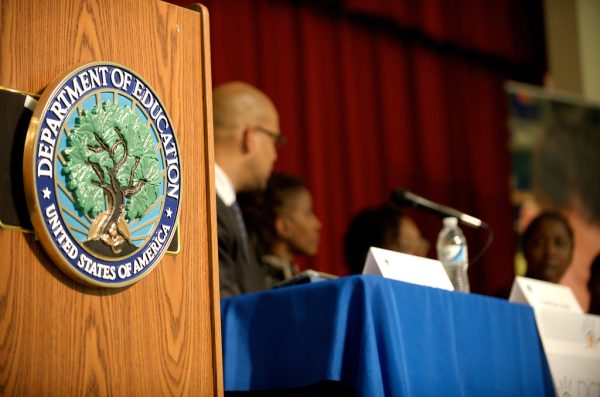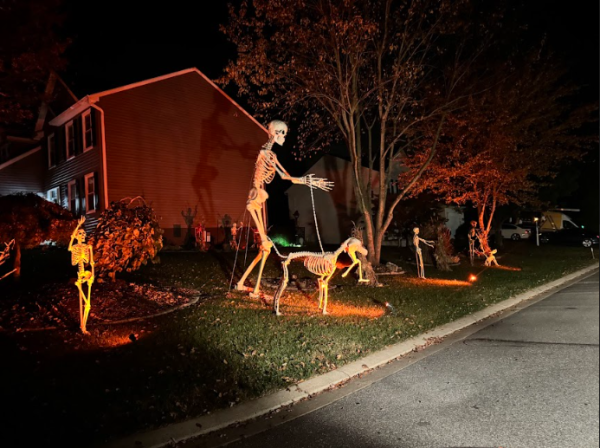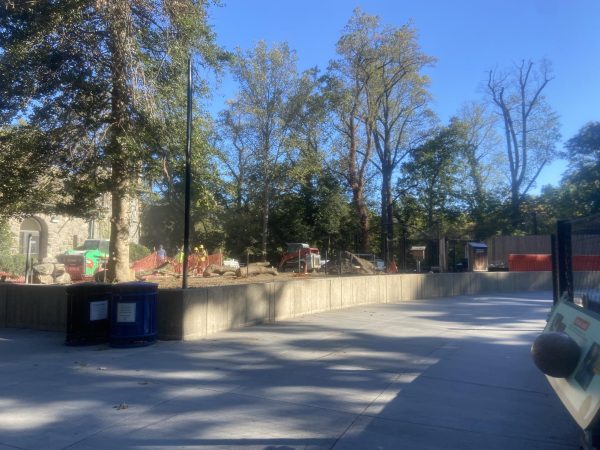NIH visits LHS music students
On May 20, 2013, two representatives from the National Institute on Deafness and Other Communication Disorders, NIDCD, part of the National Institutes of Health in Bethesda, MD, visited to present “It’s a Noisy Planet. Protect Their Hearing,” a program stressing the importance of hearing protection in children and young adults. The presentation to the music department was a direct response to an article by The Lance reporter Justin Fraumani. Fraumani’s article was brought to NIDCD’s attention, who then contacted the school asking to present to the music students.
“We were very excited to see that some of your students were taking action in your school,” said presenter Robert Miranda.
The main objectives of the presentation included teaching students how the ear works,what sound is, and how loud sounds can damage hearing. They also stressed the importance of student use of hearing protectors. Band members actively participated by performing in simulations and using objects such as pipe cleaners to simulate how loud noises can damage the ear over time.
“As we get older, high pitched frequencies are the first sounds to go,” the presenters said.
Loud, potentially damaging sounds that are a part of everyday life include listening to loud music players and cell phones, workshop tools, lawn equipment, any type of music concert, sporting events, hunting, trains, planes, ATVs, tractors, and food courts.
“I thought it was a really interesting presentation,” said Matt Watson. “I use hearing protectors when I go hunting. And I’ll probably listen to music softer.”
The hearing protector message is especially important for student musicians. A field test conducted by The Lance at a band practice in November 2012 showed that the band produced 108 decibels of sound at the climax of “Joy to the World.” This is slightly louder than a power mower at three feet*. It is above the level at which sustained exposure can result in hearing loss (85 decibels), but below the level at which pain occurs.
Prolonged exposure to loud sounds can cause tinnitus, a ringing in the ears that is a sign of permanent hearing damage.
One of the many ways to protect ears is by using hearing protectors. These devices work by reducing the amount of sound that is able to reach the ear. They make sounds softer without entirely blocking out all noise. Two types are earmuffs, which cover the ear, and earplugs, which are inserted into the outer ear canal. Both types are ideal for music students as they can be used while playing, but musicians can still hear what they are playing.
Going forward, the music department will consider using hearing protection more routinely.
“It’s something we’ll look into using for our music program,” said band director Kevin Lloyd.
More information about NIH’s “It’s a Noisy Planet.Protect Their Hearing.” campaign and other hearing-related information is available from NIH, at www.noisyplanet.nidcd.nih.gov.
*According to a decibel noise comparison chart from York County, VA available online.
Your donation will support the student journalists of Linganore High School. Your contribution will allow us to purchase camera/recording equipment and software. We hope to raise enough money to re-start a monthly printed issue of our paper.







